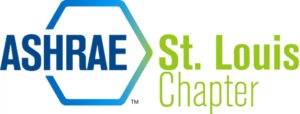November Chapter Meeting – Support ASHRAE Research – Monday 11/11
Date: Monday November 11, 2019
Russo’s Spazio Westport – 12031 Lackland Rd, St. Louis, MO 63146
REGISTER
EVENT SCHEDULE:
10:15 AM– 10:45 AM Registration & Networking
10:45 AM – 11:45 AM Technical Session
11:45 AM – 1:10 PM Lunch and Main Session
—————————————————————–
Speaker for Tech and Main Session:
Dru Crawley
Dru Crawley is Bentley Fellow and Director, Building Performance Research focusing on building performance, BIM, net-zero-energy buildings, sustainability, resilience, and smart cities. Prior to being elevated to Bentley Fellow in 2014, he led development of Bentley’s suite of building performance software for four years. Before joining Bentley in 2010, Dr. Crawley developed and managed EnergyPlus and the USDOE’s Commercial Buildings Initiative (now Better Buildings Initiative and Alliances) promoting creation of net-zero-energy buildings.
With more than 40 years of experience in buildings energy efficiency, renewable energy, and sustainability, he has worked in engineering software development, government research and standards development organizations, as well as building design and consulting companies. He received his PhD in Mechanical Engineering from University of Strathclyde in Glasgow, Scotland on the topic of building simulation as a policy tool, a Bachelor of Architecture from University of Tennessee, and is a registered architect.
Dr. Crawley is active in ASHRAE (Chair of Standard 169 Climatic Data for Building Design Standards, member and Vice Chair of Standards Committee, member of SSPC 189.1 (Standard for the Design of High-Performance, Green Buildings Except Low-Rise Residential Buildings), member of SSPC 140 (Standard Method of Test for the Evaluation of Building Energy Analysis Computer Programs), former member of the Technical Activities, Research Administration, Advocacy, and Grassroots Government Activities Committees, and past chair of Technical Committees 2.8, 4.2, 4.7, and 7.1). He was elevated to ASHRAE Fellow in 2009 and achieved ASHRAE BEMP (Building Energy Modeling Professional) certification in October 2012. Recipient of ASHRAE Exceptional Service Award (2013), Service to ASHRAE Research Award (2012), Distinguished Service Award (2003), and Symposium Best Paper Award (1999) for “Which Weather Data Should You Use for Energy Simulations of Commercial Buildings?”
He is also active in the International Building Performance Simulation Association (IBPSA Vice President since 2018, at-large board member since 1998, Fellow in 2012, Regional Affiliate Liaison since 2006), IBPSA-USA (IBPSA-USA President since 2019, board member since 2013, vice president 2017-2019, treasurer 2013-2017), U. S. Green Building Council (USGBC, past vice chair and member, Energy & Atmosphere Technical Advisory Group; past member, Research Committee; past research Liaison), the American Institute of Architects (AIA), an Affiliate member of CIBSE, and serves on the editorial boards of three international Journals. He has written more than 125 papers and articles, testified before the U.S. Congress, lectured at more than 30 universities, and made more than 400 presentations on building energy efficiency, sustainability, and renewable energy throughout the world. As an ASHRAE Distinguished Lecturer, he has given more than 150 presentations and workshops to more than 80 ASHRAE chapters throughout the world.
Tech Session: Standard 189.1: Structure, Requirements and Energy Savings
Standard 189.1, Standard for the Design of High-Performance, Green Buildings except Low-Rise Residential Buildings, is the first code-intended commercial green building standard in the United States. It provides a long-needed green building foundation for those who strive to design, build, and operate green buildings. The standard covers key topic areas of site sustainability, water use efficiency, energy efficiency, indoor environmental quality and the building’s impact on the atmosphere, materials and resources, and includes construction practices as well as plans for operation of the building after occupancy. This presentation provides an overview of the structure and requirements of Standard 189.1, including key mandatory, prescriptive, and performance requirements. The expected energy savings in comparison to other ASHRAE Standards by commercial building type is also shown.
Main Session: Impacts of Climate Change and Urbanization on Future Building Performance
With the increasing interest in climate change driven by human activity, recent research has focused on the impact of climate change or urban heat island on building operation and performance across the world. But this work usually aggregates the energy and peak demand impacts across a broad sector. In a recent study, impacts on the operating performance of an office building were estimated based on climate change and heat island scenarios in 25 locations (20 climate regions). This presentation presents the variation and differences among the 20 regions when climate change is introduced. The focus is on changes in comfort conditions, building equipment operation as well as daily patterns of energy performance using prototypical buildings that represent typical, good, and low-energy practices around the world. Other issues such as fuel swapping as heating and cooling ratios change, impacts on environmental emissions, and how low-energy building design incorporating renewables can significantly mitigate any potential climate variation are also presented.











